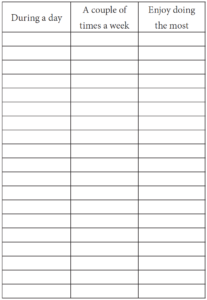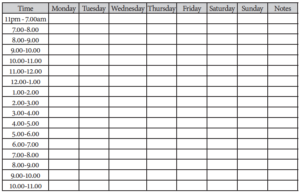Extracted from Dare to Retire Free by Kristin Sutherland and Di Murphy, Smart Retirement Publishing, RRP $39.95
Retirement: a time to enjoy all the things you never had time to do when you worked. – Catherine Pulisfer
Let’s start by imagining you are at a social gathering, one of those family gatherings where you should know everyone, but you don’t. You have a drink in hand, and then someone called Uncle Joe wanders over and says to you: ‘I remember you – so what do you do now?’ You tell Uncle Joe: I’ve just retired. -You can guess the inevitable response. Uncle Joe then asks: ‘So what do you do all day?’ (you mutter under your breath – Damn Uncle Joe – why did he ask me that?)
“Time is a gift bestowed upon us, and now you possess the power to make it count.”
Just remember you are not alone. One of the most significant changes in retirement is adjusting how we use our time. Each of us had hopes and plans for our retirement ‘someday’ – things like playing endless games of golf, fishing, traveling, reading, playing with grandkids, and lunches out – the list of activities can be never-ending.
For others, retirement begins by signing up for all sorts of classes, projects, and creative pursuits and filling as many hours as possible with activities – this can be enjoyed until it becomes tiring!
Before we move on to discover a little bit more about you; and how you can ensure all the things you want to do, or plan to do, will be ticked off your list; I want to share a story of one person’s attempt at making sure he used his time productively. Let’s call him Paul.
“Time is what we want most, but what we use worst.” – William Penn
For the first few years, Paul’s daily calendar looked like his work calendar: 15 – 30-minute time blocks assigned to various activities. He blocked in time for usual stuff such as paying bills, going to the gym, doing everyday chores, etc. But Paul also blocked time for relaxing, such as reading, golfing, and napping. So, if he didn’t want to read at 2.15 on Friday, tough – it was on the schedule.
He then started to use the ‘go with the flow’ system. He’d wake up when he wanted, eat when he was hungry, and do what he wanted when he wanted. That system was even worse! Without a structure, he didn’t know what to do – days would pass without meaning or memories, and he didn’t have anything to account for how he spent his time.
He was unhappy with either approach: scheduling every moment or having no schedule.
Many people experience the same problem, and a study published in 1Springer’s Journal – Applied Research in Quality of Life found the effective management of free time has a far greater impact on quality of life than the amount of time the person has available for leisure activities.
Therefore, it is essential to educate people on how to use this free time more effectively to improve their quality of life.
Paul then found an approach that suited him: a time management system: a blend of schedules, to-do lists, and free flow. Paul needed the discipline of knowing what to do each day. He liked a list that helped him remember to tackle tasks that should be done, and he needed to move anything from today’s list to tomorrow, next week, or next month and feel OK about it.
Refine the way you spend your day.
I’m sure most of us when we finally leave the routine of a career and a work schedule, won’t miss the alarm clock waking us up at the same time each day.
Sleeping in is a reward; however, if you find yourself sleeping half the day away – you have a problem!!! There’s so much to do in life – you need to get up and do it!!!
“The bad news is time flies. The good news is you’re the pilot.” – Michael Altshuler
Now is the time for us to get out your Bucket and Curiosity Lists. Those items on your lists are the things that are now important – not the mundane. Whether it is looking after your health, being a companion to an older relative, making more time for family, learning to play golf, devoting quality time to grandchildren, caring for those in hospital, or simply learning the saxophone or piano – just because you have always wanted to – these are the things we need to make sure we have the time to do.
“Lost time is never found again.” – Benjamin Franklin
There is so much to do – how does one fit it all in? If you are like me and find time goes so quickly, it isn’t easy to fit everything in, or perhaps, one day just blends into the other. Then, in either case, there is an urgent need to refine how the days are spent.
Now is the time to establish a new routine – remember you won’t get it right the first time, and as you grow into retirement and start crossing things off your Bucket List, you will constantly be changing that routine. Let’s use my typical day and week to give you an idea of what a retirement routine might look like.
“Don’t be fooled by the calendar. There are only as many days in the year as you make use of.” – Charles Richards
I start by fitting in my exercise as soon as I get up and before I have breakfast. At breakfast, I catch up with World News and read the newspaper, and if the weather is good, I will put the washing on as I go out the door on my walk.
Then I go grocery shopping one day a week – never at the weekend as it is far too busy, and the traffic is terrible. And as I am learning the saxophone, I try to fit in some practice every day for about ½ hour. One day a week, I set aside time to spend with my two grandsons and, at least once a month, a game of golf with my husband.
And then, whenever I can, there is catching up with friends for a coffee and a chat. My son and his family live overseas, so one trip and maybe two trips a year are locked into my calendar to visit them.
There are so many things I want to do – like getting the time to read some biographies, doing some more watercolour painting, traveling to the Baltic and Russia, and volunteering at the Radio Lollipop team in the kid’s hospital. But writing this book has taken all the spare time I have, so everything else has been put on the back burner.
Like you and almost every new retiree, I need to make sure my life schedule expands to include everything I still want to do.
Experts such as Sociologist Jean Potuchek or Dr.Rin Porter say developing, changing, and keeping a schedule is one of the key elements of happiness and health in retirement.
If that is the case, how do we ensure our schedule or routine includes all the activities we want to do? Just sticking to the same old same old won’t do it for you – remember the saying, ‘old ways won’t open new doors!’ So true.
“The key is not to prioritize what’s on your schedule but to schedule your priorities.” – Stephen Covey
How do I create a new routine?
I understand many of us don’t have a formal schedule, though if you are like my brother and his wife, they know what they need to do each day of the week. Monday is house cleaning and dinner with a family friend, Tuesday they go to the gym or join in with the gardening committee at their new +65 development; Wednesday is a craft or other personal activity day; Thursday is gym day again, along with more gardening and in the evening, dinner catch up with their friendship group, Friday is shopping day and the weekends are for family and friends.
“Time is a created thing. To say ‘I don’t have time,’ is like saying, ‘I don’t want to.’” Lao Tzu
A well-structured approach to life, but one to be expected from a former fighter pilot in the Air Force and an Airforce nurse where routines are paramount. My sister-in-law also manages to fit in either painting a masterpiece for their new apartment, sewing a unique couture creation for herself, or a book week costume for one or all her three grandchildren.
Their routine was established soon after retirement, as they understood that after following such a structured working life, retirement could be challenging for them, and time could be frittered away. And you may well ask – what about their Bucket List activities? Don’t worry about that, as their To Do List is complete with almost every item you could imagine, from going to the Country Music Festival, the annual Air Force aerial display, weekends away with their friendship group of 15 plus to all those places you’ve thought about going to as you travel up and down highways, to overseas travel with extended family every two years. Their calendar is packed.
How do you plan to fit everything into your day?
If you have a razor-sharp mind and are well organized, and you and your partner understand each other’s needs and wants, there is little to be done.
On the other hand, if your mind gets scrambled just thinking about everything to be done and things you want to do – creating a formal schedule may be a better approach in the first instance. In that case, the first thing to do is to work out what you are already doing. What’s currently taking up all your time, and why can’t I get to do the things I’ve wanted to do?
Now that you’ve learned the importance of making a schedule, how about you get down to business and make one for yourself? Do you know how to go about it? If not, that is not a problem. All you need to do is read further.
“Time isn’t the main thing. It’s the only thing.” -Miles Davis
There are several types of schedules out there, and each has its purpose and application, and we’d need to know who and what these schedules are before we find one that’s suitable to our needs. Some of the most common types include a Daily schedule, a Weekly schedule, a Monthly schedule, a Project schedule, and even a Retirement schedule. The last one outlines the activities you will be doing during your retirement. It can include everything from travel to hobbies to volunteering. I call it Big Plans for the Future.
The retirement schedule is what we’re aiming for as it is this one that schedules all our dreams, ambitions, and events that form our Bucket List. Now, how can we make it work? A retirement schedule is much less complicated than it sounds. It’s divided majorly into daily and weekly schedules. Below is a sample of what a weekly schedule may look like.
Weekly Schedule

Retirement Schedule
Big Plans for the Future: Includes hobbies, travel, and other major activities to be enjoyed throughout the year.

- At the end of this chapter, you’ll find a table of Daily, Weekly, and Enjoyable Activities; fill the column with those things you do daily, which means everything you do daily – you’ll be amazed—sleeping, eating, preparing meals, showering, dressing, checking email, washing dishes, etc., etc.
- Once you have completed that column, move to the second column, and list the tasks you do a couple of times or just once a week – such things as medical appointments, grocery shopping, mowing lawns, garbage, clothes washing, etc.
- And finally – list all the things you most enjoy doing. Traveling, reading, spending time with family, dining out, shopping, watching great movies, and most importantly, those items on your Bucket & Curiosity lists.
- Take the time to review your lists to ensure you haven’t forgotten anything – if so, add it.
- The next step is to get all these activities into a calendar. Move on to the Weekly Calendar of Activities page – can I suggest you start filling it in with pencil. If you are like me, there will be lots of rubbing out and rescheduling!
Make time for what matters.
Please write down the things you’ve always wanted to do and put a time frame on it, as it is so easy to keep doing the mundane day-to-day things and putting off all the discretionary but enjoyable events. Remember, everyone has 168 hours a week, of which approximately 56 hours are spent sleeping; the other 112 hours are to waste or do things you need to or enjoy doing. Make sure you allocate time for the things which give your life purpose.
“You will never find time for anything. If you want time, you must make it.” Charles Buxton
Your kids, spouse, and many friends have always complimented your baking skills, particularly your handmade chocolates. Now you have the time, consider starting a small business baking and supplying local stores and communities with your confectioneries. You’ve always been passionate about baking, and now is the time to take those steps to make your dreams come true.
When creating your calendar, remember to include regular activities such as appointments, family visits, planned holidays, and special events such as going to a concert or your favorite sporting grand final such as the US Open or Super Bowl.
“Time management is life management.” Robin Sharma
Make sure you write these down, as it is easy to let life slip by and fail to do everything you’ve always wanted. These are the Big Plans for the Future. Have a go at creating a personal table of your big plans.
So, what do you do all day?
That is the question that was asked at the start of this chapter and one that you should be able to answer as you create a new schedule.
By creating your schedule, you should have made some order for everything that needs to be done, but more importantly, the time for those things that matter most to you and may be on your Bucket and Curiosity lists. Remember, effective free time management has a far more significant impact on the quality of life and the time you have available for leisure activities.
It takes work to make significant changes in our lives. And altering a routine established over a lifetime of work to one which includes dreams and goals will take time. And it may take many attempts to get it right. But remember to keep adding new ones once you have completed your plan and started doing those things you’ve always dreamt of doing. You only get one chance to live your dream!
I trust you can now answer that question – What do you do all day?
“The way we spend our time defines who we are.” Jonathan Estrin
Activity
1. Daily, Weekly, and Enjoyable Activities: Fill in each column with a list of things you do:

2. Weekly calendar of activities: Pencil in each of the activities you need to do daily and weekly.

3. Big Plans for the Future
Update the Calendar with all those events that are infrequent or long-term planned.










Join the Discussion
Type out your comment here:
You must be logged in to post a comment.